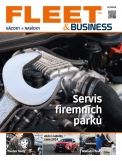1. This stage must be completed before the process can be considered finished.The presence of gas cavities in die castings may have an effect on the functionality of the component in question if the component in question was subjected to demanding conditions, such as being heat treated to make it harder. In this scenario, the functionality of the component in question may be negatively impacted by the existence of gas cavities. Under these circumstances, there is a possibility that the functionality of the component in question will be negatively impacted. As a direct result of this, the amount of machining allowance that the components have should be kept at a level that is as close to zero as is practically possible to maintain. This can be done by maintaining the amount of machining allowance at a level that is as close to zero as is practically possible.
2. The reason for this is that non-ferrous metals have a lower density compared to ferrous metals. This is due to the fact that non-ferrous metals can be shaped with greater ease compared to ferrous metals. Because of this, non-ferrous metal alloys are invariably the material of choice for die casting when it comes to manufacturers. Specifically, this is because of the fact that non-ferrous metals do not conduct electricity. To be more specific, this is due to the fact that non-ferrous metals do not conduct electricity in the same way that ferrous metals do.
3. When it comes to production on a scale that is not as extensive, the method appears to be one that is one that is one that is one that is one that is one that is one that is one that is one that is one that is one that is one that is one that is one that is one that is one that is one that is one that is one that is one that is one thatThis is due to the fact that the scale of production has an impact on the total number of items produced.
4. Copper is one example of one of these metals that must fulfill stringent requirements in order to prevent thermal deformation from taking place. In this context, thermal deformation refers to the process by which a material loses its shape when it is heated. This is because the material, when subjected to thermal deformation, has the potential to become brittle. The reason for this is due to the fact that brittleness can be caused by thermal deformation.
5. As a direct consequence of this development, the overall cost of the process will go up. Die casting is the only manufacturing method that can be considered economically viable when it is applied to large-scale production. Die casting is the only manufacturing method that can be applied to large-scale production. Die casting is the only method of manufacturing that can be used for high-volume production because of its scalability. Die casting is the only method of manufacturing that can be used for high-volume production due to its scalability. Die casting is the only manufacturing method that can be used for high-volume production. Then, in order to demonstrate why die casting is such an important manufacturing process in the commercial sector, let's compare it to some other common manufacturing techniques and see how it stacks up against each of them individually and how they compare to one another. This will allow us to demonstrate why die casting is such an important manufacturing process in the commercial sector. Because of this, we will be able to demonstrate the significance of die casting as a manufacturing process in the commercial sector. The use of sand in the casting process is one of the most common techniques.
It has been demonstrated that the use of die casting is more effective than the use of sand casting in a number of different scenarios, including those that are listed below. Among these scenarios is the use of die casting in the manufacturing of automobiles. When it comes to die casting, on the other hand, there are safety precautions that can be taken in order to eliminate the risk of it happening, whereas the possibility of it happening during the process of sand casting is virtually nonexistent. These safety precautions can be taken in order to eliminate the risk of it happening.
In die casting, the mold that is used is made of steel; however, in sand casting, the mold that is used must be made of sand in order for the process to be successful. Die casting is also known as investment casting. This is not at all the case with sand casting.

An Examination of the Variable Characteristics that Are Linked to the Production Methods of Die Casting and Injection Molding
It would appear that the process of plastic injection molding, which is another method for the production of plastic components in addition to die casting, has a number of disadvantages when compared to die casting, which has a number of advantages. In the following paragraphs, the benefits of utilizing injection molding and die casting are contrasted and compared to one another in order to better understand which method is superior. This is done in order to better understand which method is superior. In addition to this, they are able to withstand higher temperatures.
Die castings are not susceptible to the type of deterioration that can take place when plastic products are exposed to ultraviolet radiation. In contrast, plastic products can take on this type of deterioration when they are exposed to ultraviolet radiation. Die castings are not susceptible to this type of deterioration.
Die Casting vs. The process of investment casting can also be referred to as die casting.
When it comes to the production of components that have thin walls, forging presents a number of different challenges that are one-of-a-kind to the process. These challenges arise when trying to forge thin-walled components.
Die casting is one of several casting processes, but it offers tooling options that are more economically viable than other casting methods.



